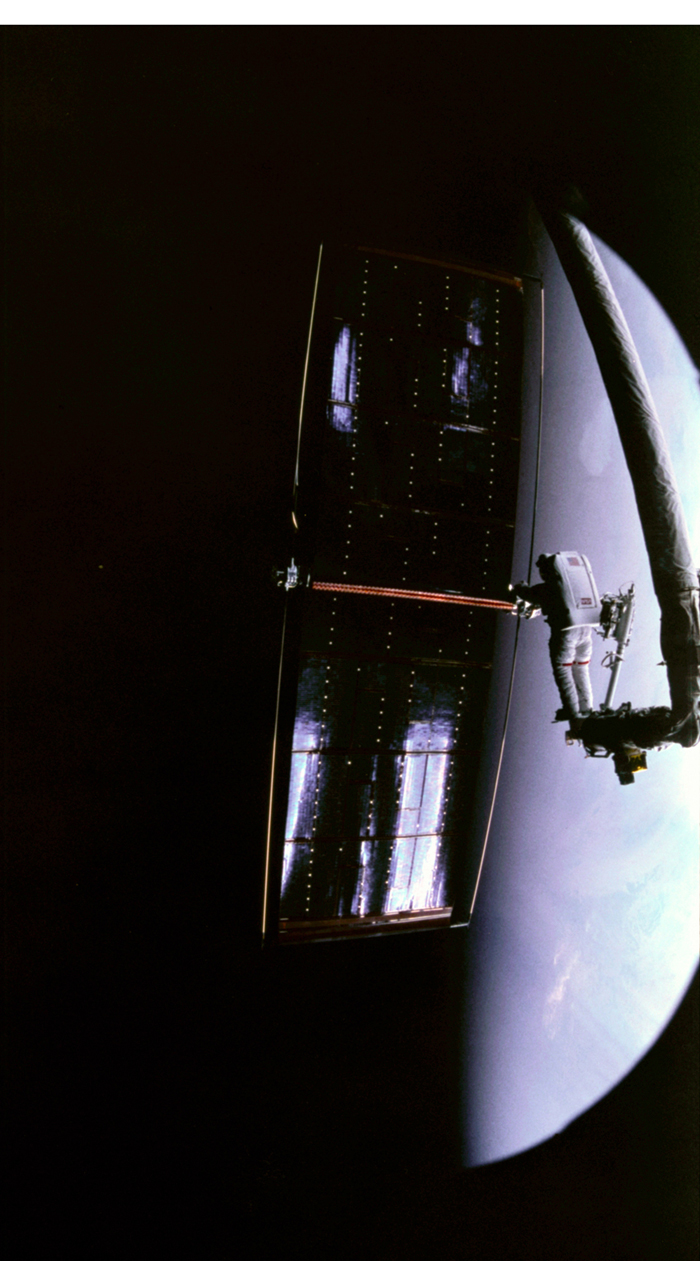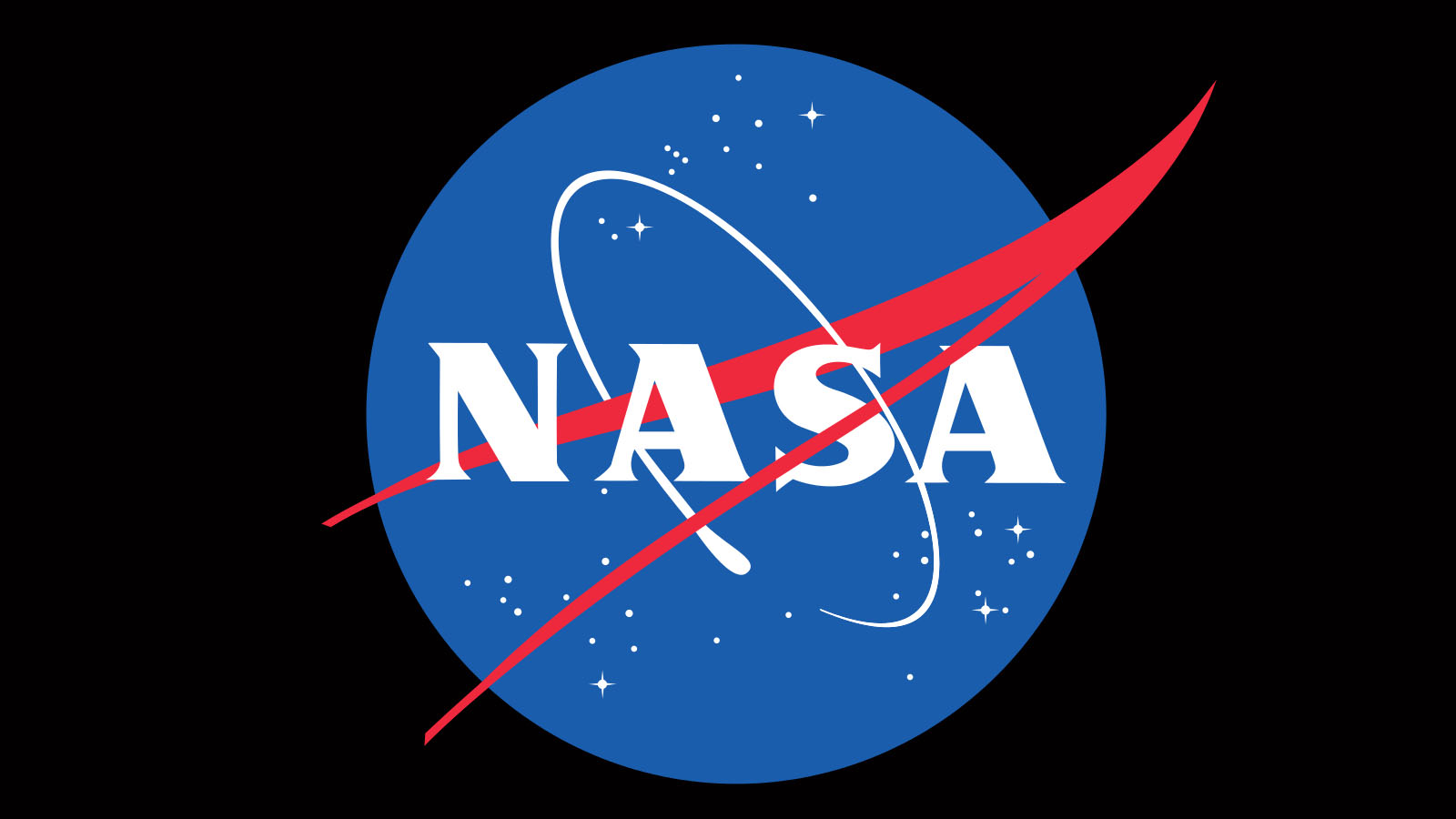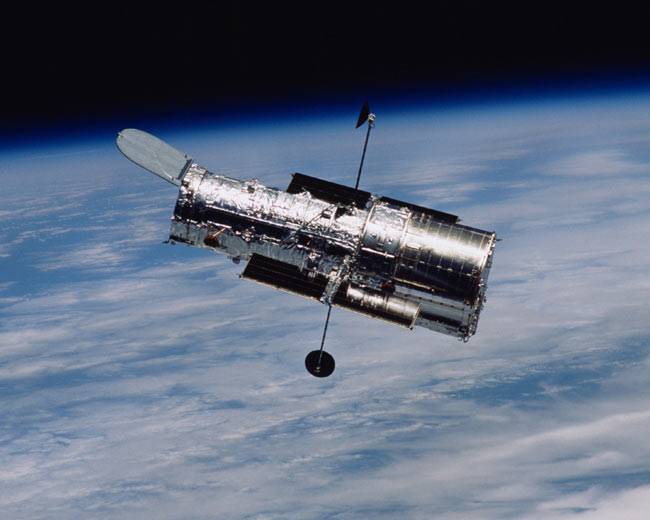Space History Photo: Astronaut Kathy Thornton Prepares to Release Hubble Telescope's Solar Wing

In this historical photo from the U.S. space agency, Astronaut Kathy Thornton prepares to release the damaged Hubble Space Telescope array after removing it.
To run all their systems, satellites need a way to generate power for months, even years. Most Earth-orbiting spacecraft, like the Hubble Space Telescope, rely on solar cells to recharge their onboard batteries. But solar panels have their own set of problems. They must be lightweight and flexible to fit inside a relatively small launch vehicle. Consequently, they tend to be fragile, and several satellites have had to cope with damaged panels once in orbit. [See more photos of Hubble Space Telescope servicing missions ]
That is what happened to the Hubble Space Telescope. Fortunately, the telescope was designed for on-orbit repairs, and astronauts were able to remove the damaged panel and replace it with a new one. In this image, Astronaut Kathy Thornton releases the old panel into low-Earth orbit during the first Hubble Space Telescope Servicing Mission in 1993. Earth's gravitation pulled the jettisoned panel toward Earth's atmosphere, where it entered and ultimately burned up.
Each weekday, SPACE.com looks back at the history of spaceflight through photos (archive).
Breaking space news, the latest updates on rocket launches, skywatching events and more!

The National Aeronautics and Space Administration (NASA) is the U.S. government agency in charge of the civilian space program as well as aeronautics and aerospace research. Founded in 1958, NASA is a civilian space agency aimed at exploring the universe with space telescopes, satellites, robotic spacecraft, astronauts and more. The space agency has 10 major centers based across the U.S. and launches robotic and crewed missions from the Kennedy Space Center in Cape Canaveral Florida. Its astronaut corps is based at the Johnson Space Center in Houston. To follow NASA's latest mission, follow the space agency on Twitter or any other social channel, visit: nasa.gov.

